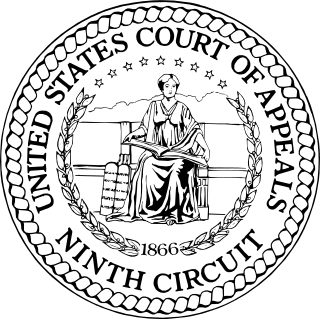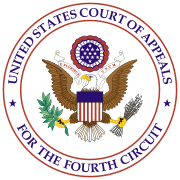A&M Records, Inc. v. Napster, Inc., 239 F.3d 1004 (2001) was a landmark intellectual property case in which the United States Court of Appeals for the Ninth Circuit affirmed the ruling of the United States District Court for the Northern District of California, holding that defendant, peer-to-peer (P2P) file-sharing service Napster, could be held liable for contributory infringement and vicarious infringement of the plaintiffs' copyrights. This was the first major case to address the application of copyright laws to peer-to-peer file sharing.

Baker v. Selden, 101 U.S. 99 (1879), was a leading Supreme Court of the United States copyright case cited to explain the idea-expression dichotomy.

The Supreme Court of the United States handed down sixteen per curiam opinions during its 2005 term, which lasted from October 3, 2005 until October 1, 2006.
Lotus Dev. Corp. v. Borland Int'l, Inc., 516 U.S. 233 (1996), is a United States Supreme Court case that tested the extent of software copyright. The lower court had held that copyright does not extend to the user interface of a computer program, such as the text and layout of menus. Due to the recusal of one justice, the Supreme Court decided the case with an eight-member bench that split evenly, leaving the lower court's decision affirmed but setting no national precedent.

Vault Corporation v Quaid Software Ltd. 847 F.2d 255 is a case heard by the United States Court of Appeals for the Fifth Circuit that tested the extent of software copyright. The court held that making RAM copies as an essential step in utilizing software was permissible under §117 of the Copyright Act even if they are used for a purpose that the copyright holder did not intend. It also applied the "substantial noninfringing uses" test from Sony Corp. of America v. Universal City Studios, Inc. to hold that Quaid's software, which defeated Vault's copy protection mechanism, did not make Quaid liable for contributory infringement. It held that Quaid's software was not a derivative work of Vault's software, despite having approximately 30 characters of source code in common. Finally, it held that the Louisiana Software License Enforcement Act clause permitting a copyright holder to prohibit software decompilation or disassembly was preempted by the Copyright Act, and was therefore unenforceable.
Feist Publications, Inc., v. Rural Telephone Service Co., 499 U.S. 340 (1991), was a decision by the Supreme Court of the United States establishing that information alone without a minimum of original creativity cannot be protected by copyright. In the case appealed, Feist had copied information from Rural's telephone listings to include in its own, after Rural had refused to license the information. Rural sued for copyright infringement. The Court ruled that information contained in Rural's phone directory was not copyrightable and that therefore no infringement existed.
Sony Corp. of America v. Universal City Studios, Inc., 464 U.S. 417 (1984), also known as the “Betamax case”, is a decision by the Supreme Court of the United States which ruled that the making of individual copies of complete television shows for purposes of time shifting does not constitute copyright infringement, but is fair use. The Court also ruled that the manufacturers of home video recording devices, such as Betamax or other VCRs, cannot be liable for infringement. The case was a boon to the home video market, as it created a legal safe haven for the technology.
Bonito Boats, Inc. v. Thunder Craft Boats, Inc., 489 U.S. 141 (1989), is a decision of the United States Supreme Court holding a state anti-plug molding law preempted because it partially duplicated and therefore interfered with the balance Congress had struck by federal patent law. The decision reaffirmed the Supreme Court's earlier decision in Sears, Roebuck & Co. v. Stiffel Co. (1964), which held a state unfair competition law preempted on the same ground.

Lenz v. Universal Music Corp., 801 F.3d 1126, is a decision by the United States Court of Appeals for the Ninth Circuit, affirming the ruling in 2008 of the US District Court for the Northern District of California, holding that copyright holders must consider fair use in good faith before issuing a takedown notice for content posted on the Internet.
Typefaces, fonts, and their glyphs raise intellectual property considerations in copyright, trademark, design patent, and related laws. The copyright status of a typeface—and any font file that describes it digitally—varies between jurisdictions. In the United States, the shapes of typefaces are not eligible for copyright, though the shapes may be protected by design patent. Typefaces can be protected in other countries, including the UK, Germany, and France, by industrial design protections that are similar to copyright or design patent in that they protect the abstract shapes. Additionally, in the US and in some other countries, computer fonts—the digital instantiation of the shapes as vector outlines—may be protected by copyright on the computer code that produces them. The name of a typeface may also be protected as a trademark.

Adobe Systems, Inc. v. Southern Software, Inc. was a case in the United States District Court for the Northern District of California regarding the copyrightability of digitized typefaces. The case is notable since typeface designs in general are not protected under United States copyright law, as determined in Eltra Corp. v. Ringer. Since that case, the United States Copyright Office has published policy decisions acknowledging the registration of computer programs that generate typefaces. In this case, the court held that Adobe's Utopia font was protectable under copyright and Southern Software, Inc.'s Veracity font was substantially similar and infringing.
Omega S.A. v. Costco Wholesale Corp., 541 F.3d 982, was a case decided by the Ninth Circuit Court of Appeals that held that in copyright law, the first-sale doctrine does not act as a defense to claims of infringing distribution and importation for unauthorized sale of authentic, imported watches that bore a design registered in the Copyright Office. It is contrasted with Kirtsaeng v. John Wiley & Sons, Inc.
Legal Services Corp. v. Velazquez, 531 U.S. 533 (2001), is a decision of the US Supreme Court concerning the constitutionality of funding restrictions imposed by the US Congress. At issue were restrictions on the Legal Services Corporation (LSC), a private, nonprofit corporation established by Congress. The restrictions prohibited LSC attorneys from representing clients attempting to amend existing welfare law. The case was brought by Carmen Velazquez, whose LSC-funded attorneys sought to challenge existing welfare provisions since they believed that it was the only way to get Velazquez financial relief.

Sony BMG Music Entertainment v. Tenenbaum is the appeals lawsuit which followed the U.S. District Court case Sony BMG v. Tenenbaum, No. 07cv11446-NG.
Reed Elsevier, Inc. v. Muchnick, 559 U.S. 154 (2010), was a decision by the Supreme Court of the United States involving copyright law. The Court held that failure to register a copyright under Section 411 (a) of the United States Copyright Act does not limit a Federal Court's jurisdiction over claims of infringement regarding unregistered works.
Christopher v. SmithKline Beecham Corp., 567 U.S. 142 (2012), is a US labor law case of the United States Supreme Court. It held that pharmaceutical sales representatives were not eligible for overtime pay. The court ruled in a majority opinion written by Justice Samuel Alito that sales representatives were classified as "outside salesmen" who are exempt from the Department of Labor's regulations regarding overtime pay.

Veeck v. Southern Bldg. Code Congress Int'l, Inc., 293 F.3d 791, was a 2002 en banc 9-6 decision of the United States Court of Appeals for the Fifth Circuit, about the scope of copyright protection for building codes and by implication other privately drafted laws adopted by states and municipal governments. A three-fifths majority of the court's fifteen judges held that copyright protection no longer applied to model codes once they were enacted into law.
Peter v. NantKwest Inc., 589 U.S. ___ (2019), was a United States Supreme Court case from the October 2019 term.
Cedar Point Nursery v. Hassid, 594 U.S. ___ (2021), was a United States Supreme Court case involving eminent domain and labor relations. In its decision, the Court held that a regulation made pursuant to the California Agricultural Labor Relations Act that required agricultural employers to allow labor organizers to regularly access their property for the purposes of union recruitment constituted a per se taking under the Fifth Amendment. Consequently, the regulation may not be enforced unless “just compensation” is provided to the employers.

Núñez v. Caribbean Int’l News Corp. 235 F.3d 18 is a copyright infringement lawsuit where the court evaluated on the issue of whether unauthorized reproduction and publication of photographs that are themselves newsworthy constituted fair use. Puerto Rican newspaper El Vocero displayed photographs of Joyce Giraud, pageant winner without the photographer Sixto Núñez's permission in an article about the controversial photos. The appeal court affirmed the lower court's summary judgment that the use of the pictures qualify as fair use.







